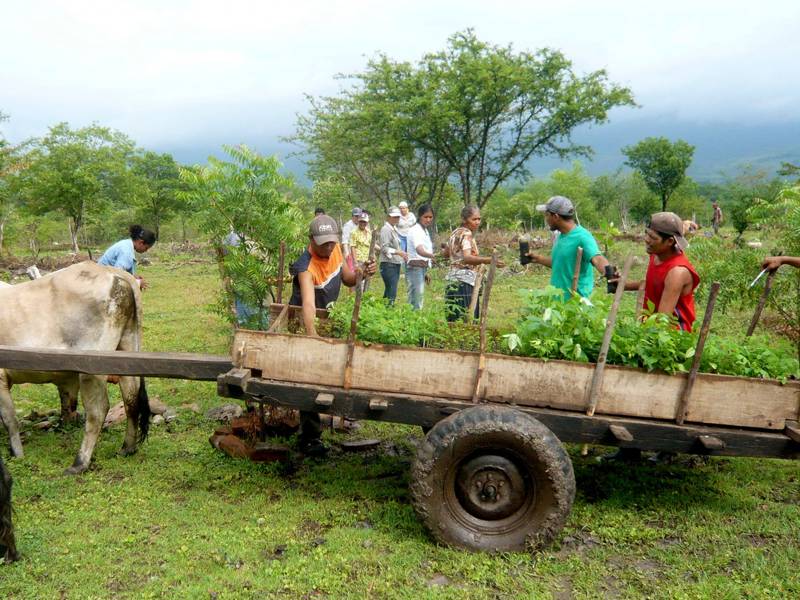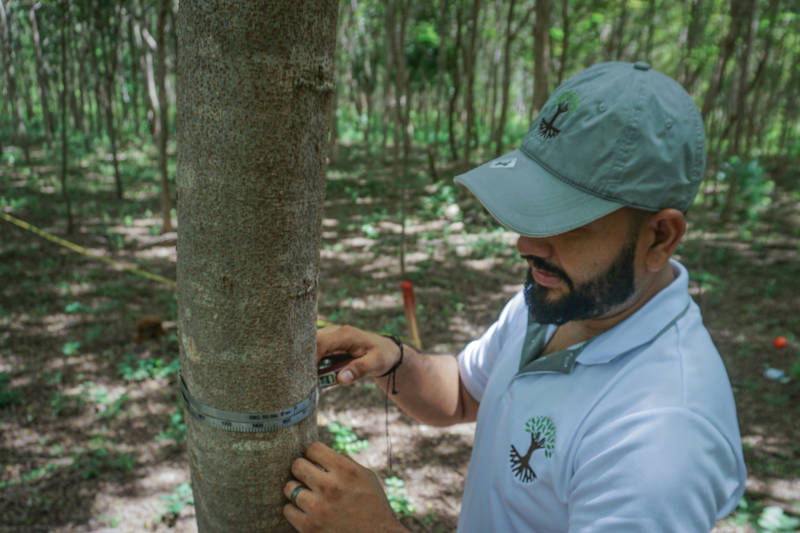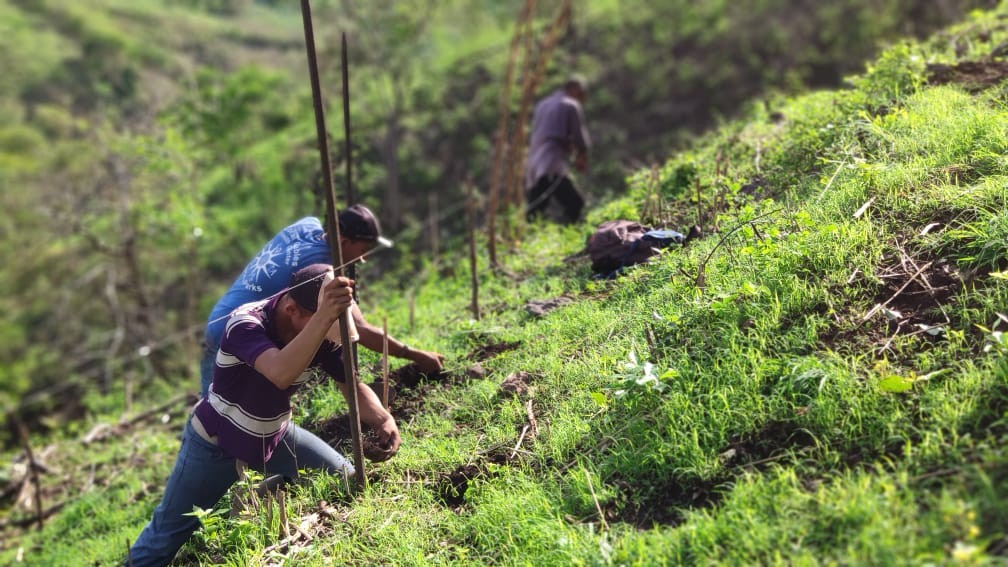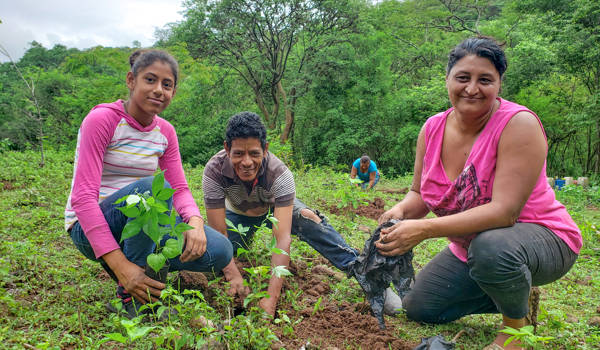Combatting poverty and climate change
To help combat rapid deforestation and reduce CO2 emissions in Nicaragua, myclimate is supporting local communities with reforestation efforts, education and much-needed extra income. Part of this project is focused around local water management to stop flooding and seasonal droughts that plague farmers in the area. Read on to find out how this project operates, and what we are contributing to the project.
Supporting rural communities
There's a way to make a positive impact on the environment and at the same time help rural communities with reforestation and sustainable cooking. This project is situated on a critical watershed that feeds into Nicaragua's most important estuary - the Estero Real. This estuary is home to one of the biggest extensions of mangroves and migratory birds in the region, and has been recognised by the Ramsar Convention on Wetlands of International Importance. By reforesting this region, this project plays an important role in regulating the hydrological cycle, providing important water and biodiversity benefits both locally and internationally, and improving the quality of life of smallholder farmers.
But this project isn't just about planting trees. Participants entering the project own underutilised land and must demonstrate that participating will not conflict with their subsistence activities, notably cattle ranching and agriculture. The project area covers 86 square kilometres and supports rural communities in taking control of their resources. Nicaragua is the second poorest country in the Western Hemisphere with a GDP per capita income of $1,079 per year, so this project is making a huge difference in the lives of local families.
One of the key supporting activities is land-use planning around watersheds. The project area includes one of the most critical watersheds in the municipality of San Juan de Limay, which suffers from seasonal water shortages and flooding. Increased forest cover will retain water through the dry season and minimise flooding in the rainy season. In addition, the project distributes fuel-efficient fireplaces equipped with chimneys that reduce smoke in the household, generating health benefits, particularly for women.

SDG 4: Conducted over 30,000 capacity building workshops providing education & training to smallholder farmers.
SDG 5: Women make up 45% of the professional team, many of whom hold leadership positions.
SDG 7: Natural wood fallen from forests provides a renewable source of energy for cooking.
SDG 8: Additional income is created through selling firewood and high value woodcrafts from the smallholder forests.
SDG 10: 2,900 seasonal jobs per year, 80% of them are landless farmers.
SDG 11: 292 rural communities engaged in the project.
SDG 12: Farmers are not only sequestering CO2 and regenerating ecosystems, but adapting the microclimate and reducing on-farm temperatures to protect their yields.
SDG 13: 1,518,386 tonnes of CO2 being stored.
SDG 15: 10 million native trees planted, reforesting over 6,167 ha of land (equivalent of 11,527 football fields), habitat and local wildlife regeneration.
"The trees improve the temperature of the farm and the planet as well. They also give us wood, shade, and better soil, helping stop erosion."
Way beyond planting trees
The project in Nicaragua addresses the causes of deforestation, ensures direct and ongoing community involvement and technical training, and provides financial benefits for participants throughout the project. This occurs through payments for ecosystem services (PES) and income from timber and sustainable forest products. As a result, this multi-faceted approach will reduce forest degradation by easing pressure on surrounding natural forest, while at the same time sequester quantifiable volumes of CO2 from the atmosphere and improve the environmental and socio-economic conditions of families located in the community of San Juan de Limay.
By establishing multiple small-scale native species forest plantations on smallholder land, this project is creating a sustainable source of income for local families, while also helping to protect the environment. And by working with the community and providing ongoing training and support, the project is building a brighter future for everyone involved.



